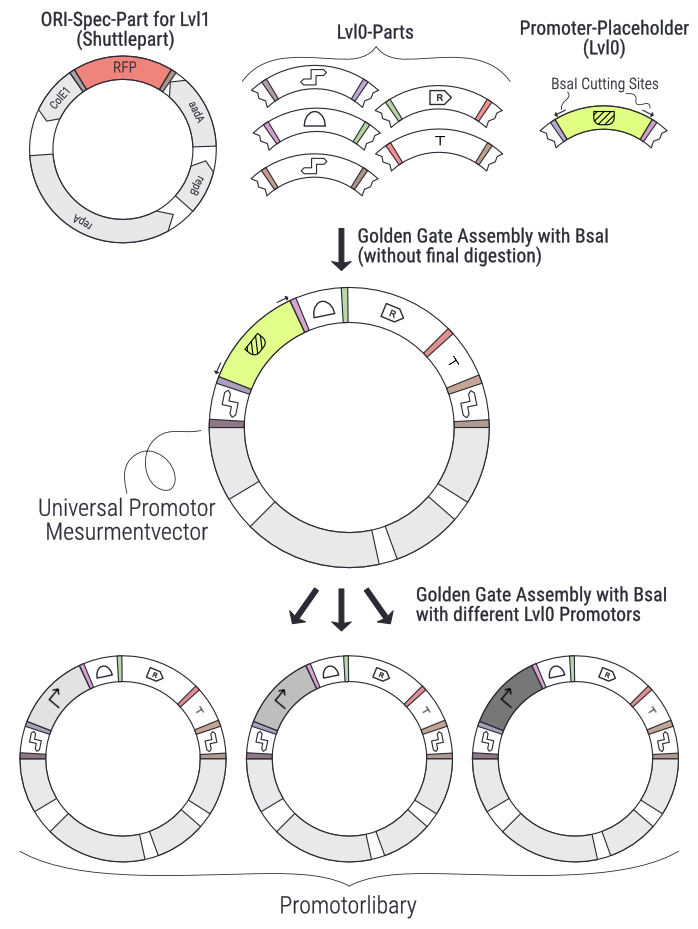pMC_0_2_XX_PRO_placeholder
Sequence and Features
- 10COMPATIBLE WITH RFC[10]
- 12COMPATIBLE WITH RFC[12]
- 21COMPATIBLE WITH RFC[21]
- 23COMPATIBLE WITH RFC[23]
- 25COMPATIBLE WITH RFC[25]
- 1000COMPATIBLE WITH RFC[1000]
C O M P O S I T E P A R T S
Composite Parts â level 2 Terminators
Transcriptional terminators play a key role in regulating natural and synthetic genetic systems (Cambray et al., 2013). Therefore, it is valuable to know how efficient such a terminator is. The termination efficiency can be detected by measurement. In order to do so a dual fluorescent protein is used (âHelp: Terminators/Measurementâ). This means, there are two reporters in a plasmid and the fluorescence ratio of these two reporters is going to be compared to detect the termination efficiency. The terminator that is going to be measured is in the middle of these two reporters.
In the absence of a terminator, the fluorescence ratio is normalized to 1 which is one calibration of this measurement (âHelp: Terminators/Measurementâ). Another method to calibrate this measurement is to measure the reporters individually, so having the same compounds on the plasmid, just changing the reporter (Haiyao Huang, 2008). Furthermore, the measurement can be calibrated by switching the fluorescing parts to measure input and output of each of them (Haiyao Huang, 2008).
For the measurement the terminator is flanked by two reporters e.g. a GFP preceding the terminator that shall be measured and a RFP following the terminator (Haiyao Huang, 2008). The fluorescence ratio of the two reporters is then compared, revealing the termination efficiency. A terminator with a 100% termination efficiency should result in no fluorescence from the second reporter so in this example mentioned above no red signal should be seen (Haiyao Huang, 2008).
Following the same principle, the efficiency of our level 2 terminators is measured. The terminator that shall be measured is flanked by two reporters. We used a m.Turquoise as preceding reporter and a YFP as following reporter. By comparing the fluorescence ratio of these two reporters, we are able to detect the termination efficiency.


